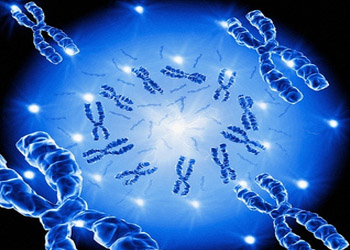 Heredity - Passing of traits from parent to offspring
In humans, eye color is an inherited characteristic. The traits such as brown, blue or grey eyes; black, brown or blond hair are transmitted from parents to offspring through discrete heritable units called "genes" which can be sorted and passed along, generation after generation, in undiluted form.
Heredity - Passing of traits from parent to offspring
In humans, eye color is an inherited characteristic. The traits such as brown, blue or grey eyes; black, brown or blond hair are transmitted from parents to offspring through discrete heritable units called "genes" which can be sorted and passed along, generation after generation, in undiluted form.
The most fundamental property of all living things is the ability to reproduce. All organisms inherit the genetic information specifying their structure and function from their parents. How genetic information is replicated and transmitted from cell to cell and organism to organism thus represents a question that is central to all of biology.
It has long been noted that offspring resemble their parents in many ways, and that many traits are passed from one generation to the next. This is evident in the physical similarities of siblings, and in offspring and their parents.
Although there are definite similarities between parents and offspring (and between offspring), there is also variation. After all, children never look entirely like either of their parents, because they have inherited traits from both parents.
Variation is the phenomenon where offspring differ somewhat in appearance from parents and siblings. The transmission of traits from one generation to the next is called inheritance, or heredity. Genetics is the scientific study of heredity and hereditary variation.
For example, in humans, eye color is an inherited characteristic and an individual might inherit the "brown–eye trait" from one of the parents. Inherited traits are controlled by genes and the complete set of genes within an organism's genome is called its genotype. A phenotype is the composite of an organism's observable characteristics or traits, such as its morphology.